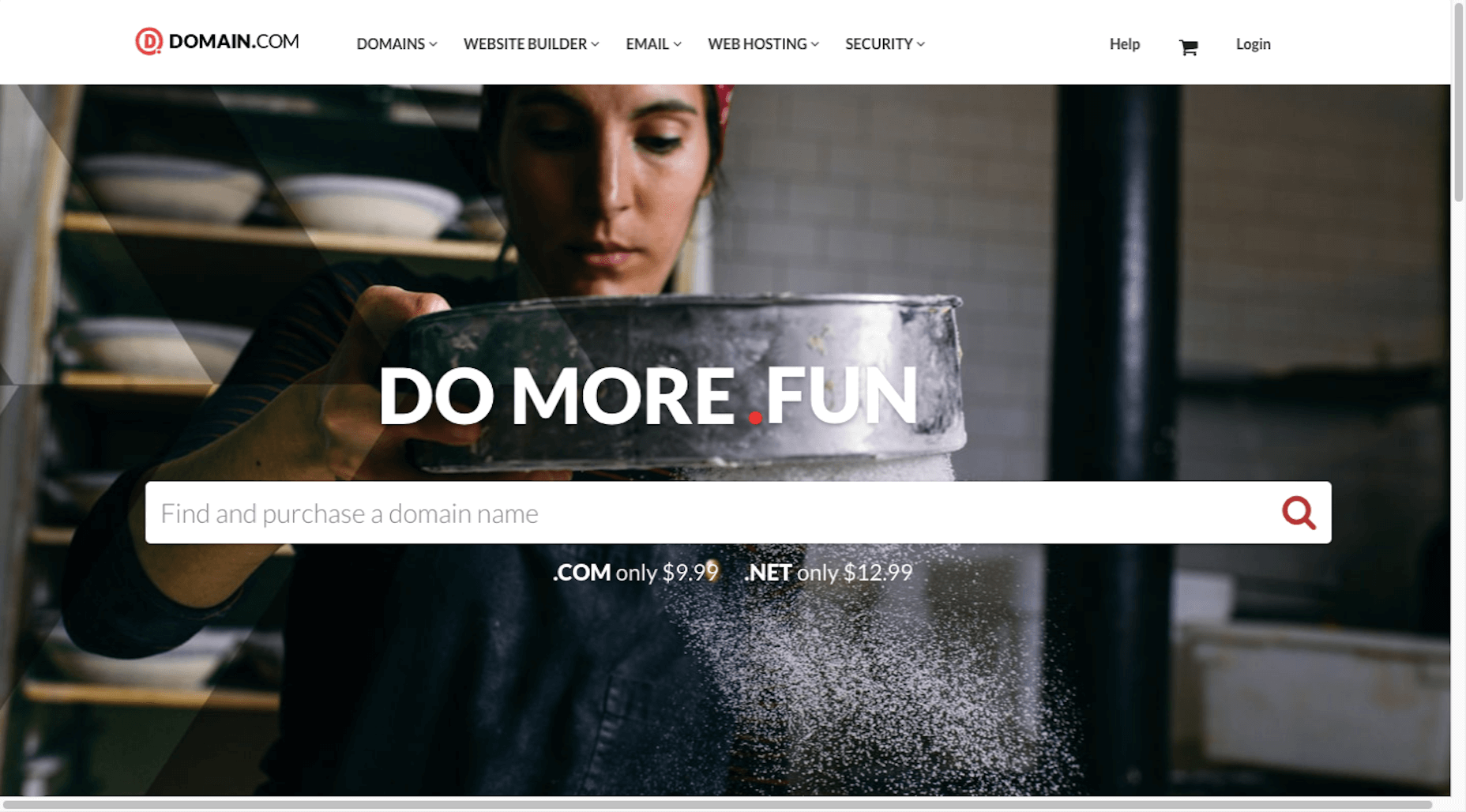So, you’ve selected a name and crafted a striking visual identity for your new design enterprise. The next crucial step? Establishing your presence online to begin earning. In this article, we’ll explore the key digital locales where your web design business should set up shop and guide you through getting it operational swiftly.
Step 1: Create Your Digital Foundation
For web designers and developers, lacking a personal website is inconceivable. It’s not just a repository of information for potential clients but also a tool for streamlining tedious tasks that distract from your billable work. So, let’s kick things off with your website:
Secure Your Domain
Finding the perfect domain name is critical. If you haven’t already, brainstorm using a business name generator tool. As for purchasing your domain:
 Actions:
Actions:
- Purchase from a domain registrar like GoDaddy or Domain.com;
- Alternatively, buy via your chosen web hosting service;
- Consult upcoming tips to decide which would be most beneficial for you.
Select Your Content Management System (CMS)
Choose a CMS you’re comfortable with and that you’ll also utilize for your clients’ sites. It eradicates any confusion on why you might use a different platform for your business compared to what you suggest for theirs. Actions:
- If opting for a self-hosted CMS such as WordPress, Joomla, or Drupal, wait until after securing web hosting;
- For solutions like Wix or Squarespace, skip ahead and sign up directly, as web hosting isn’t necessary in this context.
Acquire a Hosting Plan
There are various hosting types available, but here’s what you typically need from a provider:
- Reputed provider with prompt, proficient support;
- A cost-effective base plan with shared or cloud hosting options;
- Server locations that are geographically favorable;
- Robust security measures, both virtual and physical;
- Speed enhancements from the server-side technology;
- Compliance with your chosen CMS, ideally with easy installation.
Additionally, consider the perks of SSL certificates, CDNs, and, where possible, complimentary domain names. Actions:
- Opt for a web hosting package that imbues confidence, encompassing domain registration and an SSL certificate – a requirement for search engine optimization;
- Commence creating your website using the CMS from your control panel as soon as you’re ready to proceed.
Website Development
Here, aim for two primary objectives:
- Ascertain a web presence that accurately represents your expertise to potential clients;
- Design a site that is representative of the caliber of work clients desire.
Thus, there’s no need for unnecessarily complex or avant-garde design elements. Instead, focus on simplicity, cleanliness, and an authentic depiction of your professional brand.
Implement Your Design Style
Firstly, channel your established visual branding into the design of your site. If using WordPress, consider commencing with a versatile theme.
Build the Necessary Web Pages
A theme generally prescribes the basic pages your site will necessitate. To ensure all significant pages are covered, here are the essentials:
- Home
- About
- Services
- Portfolio
- Contact
Eventually, when you’ve gathered sufficient work and feedback, you may elect to create dedicated Testimonials and Case Studies pages. For now, integrate work samples into your Portfolio page and intersperse client testimonials throughout your homepage.
Compose Your Web Copy
Even if prose isn’t your forte, clarity and error-free writing will suffice. Your clients will pay more heed to the substance of your message rather than the eloquence of your writing. However, if the thought of drafting content is daunting, here are some pointers to assist you:
- Aim for brevity. Minimalistic design is lauded, and so is succinct copy.
- Embrace transparency. Clearly delineate what clients can expect from collaboration with you.
- Steer clear of vacuous buzzwords. Prioritize concrete skills in your communication.
- Let your imagery share part of your narrative. Select or craft images that resonate with your audience.
- Prior to making your content live, polish both structure and formatting from a designer’s lens.
- A final review through grammar checking tools, like the Hemingway Editor, will ensure a flawless presentation.

Integrate Essential Website Features
Features include additions beyond the core design and content, such as:
- Chatbot/live chat capabilities
- Contact forms for user engagement
- Pop-ups or notification systems
- Appointment scheduling functionality
- Cookies policy notifications
Incorporate only those features that serve to automate your marketing and business processes, thereby streamlining your operations.
Step 2: Optimize for Search Engines
Search engine optimization is fundamental to increase your business’s visibility through organic discovery on the web. Successfully optimized websites can yield customer inquiries naturally, without the necessity for direct marketing or lead chasing. SEO is a broad field, thus only an overview is presented here; nevertheless, consult the following guidelines for comprehensive insights:
- Accelerate your website loading times;
- Craft strategic content and keyword selection;
- Leverage your design expertise for technical SEO strategies;
- Employ various SEO tools to evaluate and enhance your site’s search performance.
Step 3: Engage in Social Media Activism
While your website takes on multiple roles, it cannot directly connect with or expand your network. That’s where a proactive social media strategy comes in. Your choice of platforms should be based on where your authority can be established and where discovery is likely:
- Create profiles across relevant social networks;
- Ensure your social brand aligns with your website, both visually and content-wise;
- Maintain a consistent content sharing schedule, automated wherever possible but with personal engagement periodically;
- Avoid typical social media blunders.
Conclusion
While this guide is comprehensive, it is imperative to exploit every available avenue to spearhead the success of your online business venture. Hopefully, this three-part roadmap offers a valuable framework for initiating your entrepreneurial journey in the design world. Should you have queries regarding the advice imparted, interact with us in the comments. Featured image courtesy of Pexels.

